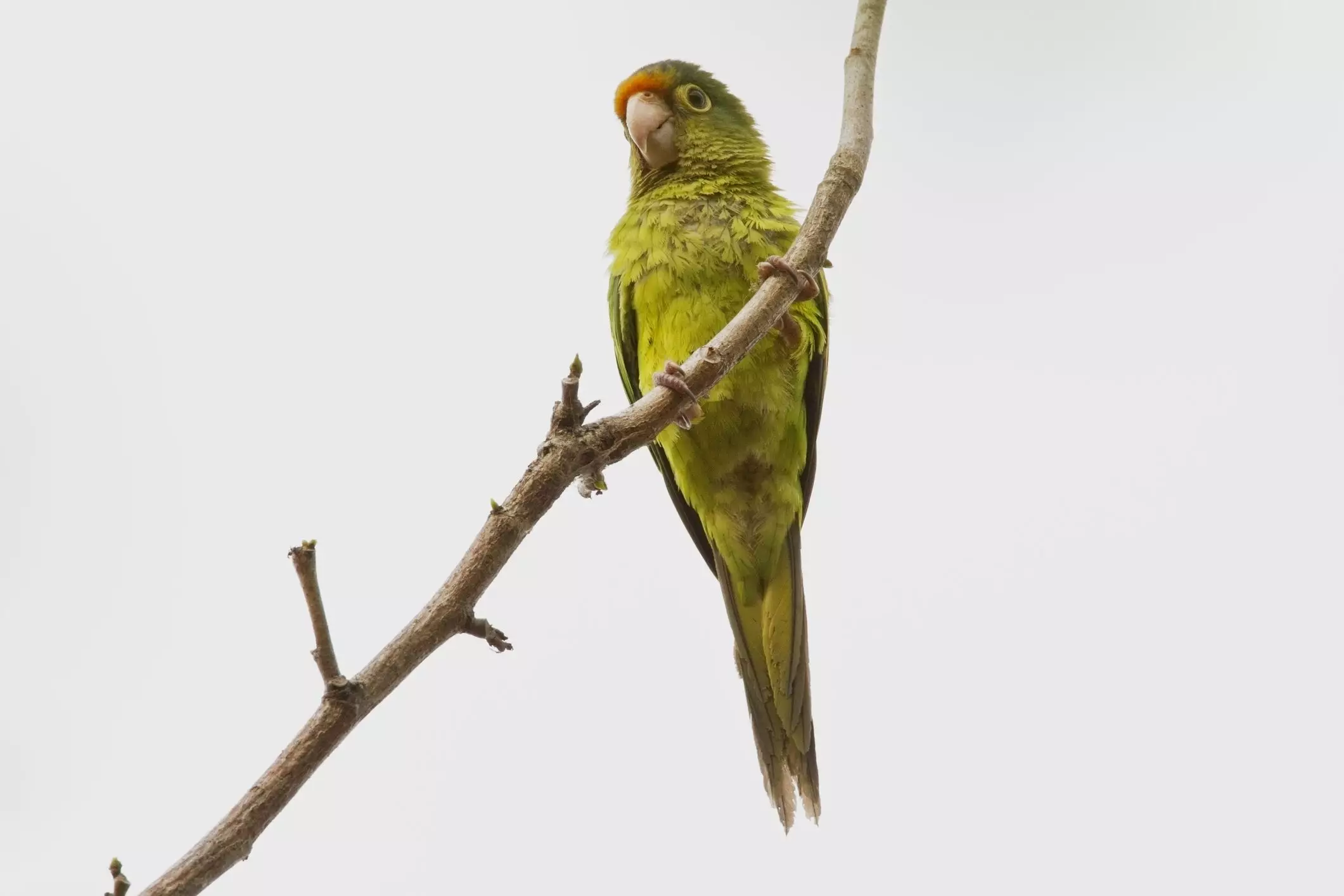The half-moon conure, scientifically known as Eupsittula canicularis, stands out among bird species for its distinctive personality and striking appearance. Known to keep a relatively quiet demeanor compared to other conure species, these medium-sized parrots can be ideal pets for individuals seeking an engaging companion that requires moderate noise levels. Their unique behavioral traits and social needs make them a delightful choice for the right owner.
Indigenous to the tropical climates of Mexico and Costa Rica, half-moon conures thrive within vast flocks touching numbers of up to one hundred. Their natural habitats encompass treetops, lowlands, and, intriguingly, savannahs. These birds demonstrate remarkable adaptability, as they nest not only in conventional tree hollows but also on termite mounds and in vacated woodpecker holes. Interestingly, while they exhibit a strong preference for social living, they pair off during the breeding season, showcasing their complex social structure and behavior patterns.
Physical Attributes
Adult half-moon conures measure approximately 9.5 inches long, weighing around 75 grams. Their feathers are predominantly bright green, transitioning to a rich emerald on the wings and back. Distinguishing features include a unique naked eye ring similar to that of macaws, a horn-colored beak, and a vibrant orange band above their beak, crowned by a blue forehead. Notably, both male and female half-moon conures display identical coloration, allowing for some ambiguity in sex identification.
Half-moon conures are bursting with personality and display a playful demeanor. They thrive on social interaction and enjoy engaging with their owners through play and exploration. A well-socialized half-moon conure forms a strong bond with its human family, often demonstrating affectionate behaviors. Unlike some of their more boisterous relatives, these parrots typically enjoy a quieter existence, making them suitable for apartment living or households where noise is a concern. Though they are not known for extensive talking capabilities, they possess the ability to mimic certain sounds, which can be charming in its own right.
The exercise and mental stimulation needs of half-moon conures are significant. They require ample space to fly freely and explore their environment. Their playful nature means that they love to climb and engage with toys, making it essential to provide a variety of play opportunities outside their cage. While they tend to be less destructive compared to other avian species, providing them with stimulating environments helps prevent boredom and potential behavioral issues.
A well-balanced diet is crucial for maintaining the health of half-moon conures. A high-quality formulated bird pellet should form the basis of their diet, which can be complemented with seeds, fresh fruits, and vegetables. Integrating a variety of fruits and veggies not only enhances their nutritional intake but also keeps them mentally engaged. Offering healthy treats, such as sugar-free cereal and whole-grain pasta, can provide additional excitement.
Moreover, awareness of health risks is critical, as half-moon conures can be susceptible to respiratory illnesses, liver dysfunction, and behavioral issues due to diet inadequacies. Therefore, it is essential to maintain clean living conditions and provide adequate nutrition and exercise to foster long-term health.
Half-moon conures thrive in environments where they receive extensive attention from their owners. While a cage is necessary for secure housing, it should not be their only living space. Supervising them outside of their cage is vital to allow for exploration and playtime. Implementing safe flight areas, using play gyms, or providing cage toppers facilitates their need for movement and exploration.
Regular veterinary visits are also imperative to monitor their health and preemptively address any potential issues. As these birds can often mask symptoms of illness, consistent care ensures their well-being and happiness.
Finding Your Half-Moon Conure
Unlike some of their more commonly sought counterparts, half-moon conures may be less prevalent in typical pet stores. Prospective owners may find them at specialized bird shops or through reputable breeders and rescues. Consulting local avian veterinarians or browsing methods like PetFinder.com can aid in locating one of these enchanting birds. Owning a half-moon conure demands commitment and nurturing but can yield a fulfilling and beautiful bond with a unique avian companion.
Half-moon conures present a delightful combination of charm, beauty, and social interaction. With careful consideration and the right environment, these engaging birds can thrive as cherished pets, bringing joy and companionship to their owners’ lives for many years.

